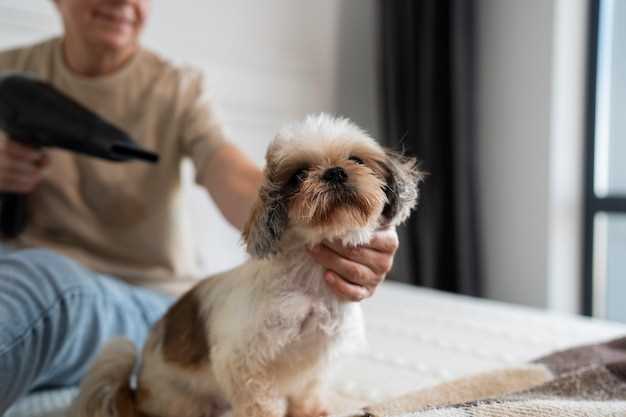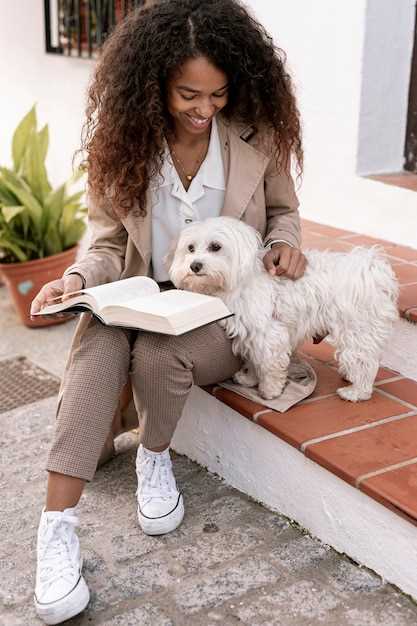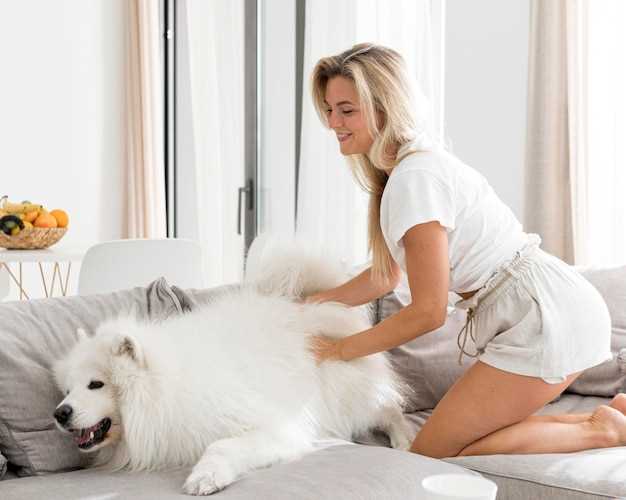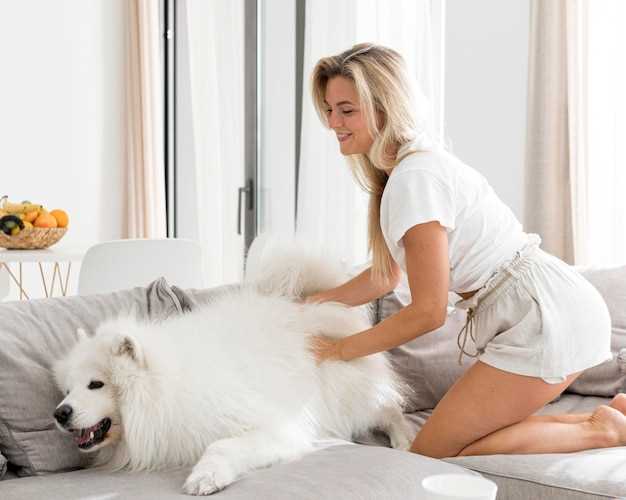Ultimate Guide to Caring for Your Maltese Dog
Adopting a furry friend brings immense joy. However, it requires commitment. Understanding how to nurture and support that little companion is crucial. Their unique needs can sometimes be overwhelming. Yet, sharing your life with them becomes a rewarding experience.
Information about grooming, nutrition, and training plays a vital role. Every element contributes to their happiness and development. These small creatures are not just pets; they are family members. You’ll find that attention to detail makes a world of difference in their well-being.
Let’s dive deep into various aspects of ownership. From selecting the right food to choosing appropriate health solutions, each choice influences overall health. Moreover, building a strong bond through play and companionship is equally significant. This journey is about creating a harmonious relationship filled with love and mutual respect.
Whether you are a first-time owner or a seasoned enthusiast, embracing their quirky personalities is what makes this adventure special. Understanding effective strategies for training and socialization can ease challenges. Your dedication will enable you to navigate any bumps along the way smoothly.
Join us as you explore invaluable practices that ensure a fulfilling life together. Unlock the secrets to improving their overall quality of life, ensuring every moment is cherished. After all, fostering a heartfelt connection with your adorable companion is the true essence of companionship.
The Complete Guide to Maltese Dog Breed

Welcoming a furry companion into your home can be a thrilling experience. Choosing the right breed is crucial for compatibility and happiness. This particular type of canine is known for its charming personality and loving nature. Small in size, yet big in affection, these little creatures can bring joy and companionship to any household.
Typically, they are friendly and well-mannered. Their playful attitude keeps families entertained. Regular socialization can enhance their sociable demeanor. With ample love and attention, these pets thrive in various environments.
Grooming plays a significant role in maintaining their stunning coat. Regular brushing prevents tangles and matting, ensuring a healthy appearance. Additionally, early training contributes to their obedient behavior. A few minutes of daily engagement can make a big difference in their overall well-being.
Choosing the right nutrition is equally important. High-quality food supports their energy levels and vitality. Monitoring portion sizes helps maintain a healthy weight, reducing health risks associated with obesity. Regular vet check-ups ensure they remain in prime health over the years.
Playing, exercising, and cuddling are vital aspects of their happiness. These furry friends love to be cherished and involved in family activities. Investing time into their emotional needs builds a strong bond that lasts a lifetime. Each interaction enriches your relationship, creating cherished memories together.
Essential Care Tips for Maltese Dogs

Caring for a small canine companion requires attention to detail. Regular grooming ensures their coat remains beautiful and free of mats. Proper nutrition is vital for maintaining health and vitality. Exercise routines should be both fun and suitable for their energy level. Building a consistent schedule promotes a sense of security for these little ones. Nutrition, hygiene, and training will greatly influence their well-being.
Regular veterinary check-ups are crucial to detect any issues early. Adequate vaccinations and preventive treatments keep them safe from common ailments. Choosing high-quality food rich in nutrients supports their overall growth and energy. Moreover, mental stimulation through toys or training prevents boredom and destructive behavior.
| Aspect | Recommendation |
|---|---|
| Grooming | Brush daily and schedule professional grooming every 6-8 weeks. |
| Nutrition | Opt for premium quality pet food tailored for their size and age. |
| Exercise | Engage in at least 30 minutes of play or walks daily. |
| Training | Implement basic commands and socialization from an early age. |
| Health Care | Visit the vet annually for check-ups and vaccinations. |
Creating a loving environment, combined with these strategies, helps ensure longevity. Remember, your furry friend thrives not just on basic needs, but also on affection and attention. Investing time into their happiness reaps dividends in loyalty and companionship. Always remain observant of changes in behavior or health, as this can signal underlying concerns.
Understanding Maltese Nutrition Needs
Every canine companion has specific dietary requirements that contribute to overall well-being. Proper nutrition is essential for maintaining energy levels, promoting healthy skin, and ensuring a shiny coat. Knowing what to feed a small breed is crucial. Nutritional needs vary greatly among different types of pets.
For smaller breeds, like this fluffy companion, portion control is vital. Keeping body weight in check can prevent health concerns. A balanced diet should include:
- High-quality protein sources.
- Healthy fats for energy.
- Essential vitamins and minerals.
- Fiber for digestive health.
When choosing food, it is important to scrutinize the ingredient list. Selecting options with real meat as the primary ingredient is recommended. Furthermore, avoiding fillers and artificial additives benefits overall health, ensuring a robust immune system and optimal growth.
Monitor the nutritional content based on age, activity level, and health condition. Puppies require more calories than adults. Senior companions may need specific diets tailored for aging. Regular consultations with a veterinarian can guide dietary adjustments.
- Hydration is equally important; always provide fresh water.
- Mealtimes can be structured to promote routine.
- Consider incorporating occasional treats, but choose wisely.
- Observe your pet’s eating habits for any changes.
Ultimately, understanding these nutritional guidelines fosters a long, vibrant life for your beloved companion. By prioritizing a wholesome diet, you can ensure that your furry friend thrives in every stage of life, enjoying both health and happiness.
Grooming Techniques for a Healthy Coat
Maintaining a beautiful and healthy coat is crucial for optimal well-being. Regular grooming not only enhances appearance but also fosters a strong bond between pet and owner. Consistency in this practice is key. By using the right techniques, you can avoid common issues and promote a vibrant, shiny coat. It’s not just about aesthetics; it’s about health.
Start with brushing to remove loose hairs and prevent matting. Utilize a slicker brush or a comb designed for this purpose. Regular brushing sessions can be quick but must be done frequently. Aim for at least two or three times a week. This routine can significantly reduce the amount of hair shed around the home.
Bathing is another vital aspect to consider. Use a gentle shampoo formulated for sensitive skin; too much moisture can lead to skin problems. Depending on activity level, a bath every four to six weeks is generally sufficient. Always ensure thorough rinsing to avoid residue accumulation. After a bath, drying properly is equally important. Utilize a soft towel or a pet-specific dryer to maintain coat integrity.
Regular nail trimming contributes to overall health as well. Long nails can lead to discomfort and mobility issues. Aim to trim nails every few weeks, using specialized clippers for best results. Pay attention to the quick to avoid cutting too deep; this could cause bleeding. If you’re unsure, consult a professional for assistance.
Regular Health Checkups and Vaccinations
Frequent veterinary visits play a crucial role in maintaining well-being. These health assessments are vital for early diagnosis of potential issues. Vaccinations protect against numerous contagious diseases. Regular attention ensures your furry companion lives a long, healthy life.
Building a schedule for routine examinations is key. It allows monitoring of overall health. Discuss any concerns with your veterinarian. They can tailor recommendations based on unique needs.
- Initial vaccinations are essential during the first year.
- Annual checkups help catch issues before they escalate.
- Parasite control may be required depending on your environment.
- Dental hygiene is often overlooked but critically important.
In addition to these practices, keeping records of vaccinations and treatments helps create a comprehensive health profile, which is valuable for both you and your vet as it provides critical insights regarding previous conditions, any ongoing treatments, and vaccination status necessary for travel or boarding.
Maintaining a close relationship with your vet is beneficial. They serve as a trusted resource for guidance. Always communicate changes in behavior or appearance. These may indicate underlying health issues that require prompt investigation.
Preventive measures ultimately save time and money. They foster a more harmonious life together. Your friend’s happiness depends on proactive management. Healthy pets bring immense joy to families.
Creating a Safe Living Environment
Ensuring a secure space for your furry companion is crucial for their well-being. A protected area helps prevent accidents and creates peace of mind for both pet and owner. Many factors contribute to a safe atmosphere. It requires consideration of numerous aspects. A few simple precautions can make a big difference.
Start by removing potential hazards from living spaces. Keep chemicals and toxic substances out of reach. Regularly check for dangerous items like sharp objects or choking hazards. Ensure that electrical cords are safely tucked away. Also, make sure windows and balconies are secure, preventing any chance of a fall.
- Inspect furniture for stability.
- Choose non-slip rugs to avoid slipping.
- Keep small items off the floor to prevent choking.
- Install gates in areas that prevent access to stairs.
- Use cabinets to store cleaning products and medications.
Creating a comfortable space isn’t just about safety; it also involves selecting appropriate areas for rest and play. Designate zones where your pet can feel relaxed, away from heavy foot traffic and noise. Provide cozy bedding, ventilation, and shade in their resting spots to enhance their experience. Consider using pet-friendly furniture that can withstand wear and tear, as well as easy-to-clean materials, ensuring a pleasant environment for both you and your beloved companion.
Lastly, regular upkeep is vital. Routinely inspect for new dangers, whether it’s furniture wear or new household items. A proactive approach ensures that risks are minimized. Keep in mind, a nurturing and secure environment promotes happiness and health in your pet. Ultimately, thoughtful preparation leads to a harmonious living arrangement.
Training and Behavioral Insights

Understanding behavior patterns is crucial for nurturing a positive relationship. Consistent training fosters trust between owner and pet. Engaging activities promote mental stimulation. Each session can be an opportunity to explore new commands and praises. Effective communication is key; it helps in addressing specific needs.
Initial exposure to commands can greatly influence future learning. Owners should employ various methods, tailoring techniques to individual personalities. Keep training sessions brief but impactful. This approach prevents boredom and enhances focus over time. Motivation, in the form of treats or toys, keeps enthusiasm alive for both parties.
| Training Method | Description |
|---|---|
| Positive Reinforcement | Rewarding desired behaviors to encourage repetition. |
| Clicker Training | Using a click sound to mark the moment of correct behavior. |
| Socialization | Introducing various environments and people to minimize anxiety. |
| Leash Training | Teaching proper walking etiquette on a leash for enjoyable outings. |
Additionally, understanding body language adds another layer to effective interaction. Small signs, like tail movement or ear position, reveal moods. Owners should recognize when their furry companion is anxious or excited. Flexibility in approach encourages better cooperation during training endeavors. Individual personalities vary, and patience is essential in developing responsive behaviors.
Effective Commands and Basic Training
Establishing clear commands is crucial for a harmonious relationship. Training creates boundaries and fosters understanding. Consistency is key; ensure every session builds on the previous one. Patience goes a long way in this process. Dogs thrive on routine, which helps them learn faster.
Begin with simple commands that form the foundation of obedience. “Sit,” “Stay,” and “Come” are essential for effective communication. Reinforce learning with positive reinforcement methods. Treats, praise, and affection can significantly motivate your pet. Make training sessions short but frequent to maintain focus.
As training progresses, gradually introduce more complex commands. Incorporating games can enhance the experience, making learning fun and enjoyable. A playful approach encourages your pet to engage actively during training sessions. Over time, patience combined with consistent practice will yield impressive results.
Socialization should also be included in training. Exposure to various environments, people, and animals helps build confidence. An animal that feels secure is more inclined to respond to commands. This early engagement will aid in developing a well-adjusted companion.
Always keep a positive attitude during training, as mood influences outcomes. If things get tough, take a break and come back refreshed. Each training experience strengthens your bond. Ultimately, a well-trained pet contributes to a more enjoyable partnership.
Socialization with Other Pets and People
Building strong connections with both other animals and individuals is critical for happy companions. Early interactions shape behavior and personality. Engaging in diverse environments fosters adaptability and confidence. Regular exposure helps mitigate anxiety and aggression. Socialization can transform timid pets into sociable friends.
Establishing a routine of meetings with various species is beneficial. Familiarizing them with different sounds, scents, and sights creates a well-rounded experience. Participating in dog parks or pet-friendly events can be an excellent opportunity to socialize. However, always ensure these settings are safe and controlled to promote positive encounters. Remarkably, integrating structured playtime not only encourages joy but also reinforces essential social skills, thus creating opportunities for your beloved pet to thrive alongside both humans and fellow animals.
Introducing new people can be exciting yet daunting for some. Make these introductions gradual and rewarding. Offer treats and praise to create positive associations. Always observe body language for signs of comfort or distress. When interactions occur in a calm manner, it paves the way for a harmonious living environment. Building trust takes time, but patience yields wonderful results.
Consistent social exposure opens up a wealth of experiences. Ensuring pets interact with various age groups, including children, enhances their adaptability. This process helps them understand boundaries, promoting respectful behavior. Group activities, such as obedience classes, can be particularly helpful. The blend of learning and social interaction creates unforgettable moments for both partners.
Incorporating different pet types into play can yield enrichment. Supervise all interactions, particularly when introducing unfamiliar animals. Gradually acclimating them to new situations lessens potential fears. Ultimately, the goal is fostering a well-adjusted companion capable of thriving socially. The journey of socialization transforms pets, enriching their lives and making them cherished parts of any family.
Addressing Common Behavioral Issues
Understanding typical challenges related to pets is crucial for harmonious living. Many factors contribute to these behaviors. Owners often face frustrations without knowing effective solutions. Common issues can be barking, chewing, or socialization troubles. Each of these requires unique approaches that blend patience with consistent training.
Determining the root cause of these behaviors is essential before implementing strategies. For example, excessive barking might signal boredom or anxiety. Similarly, destructive chewing often stems from anxiety or lack of engagement.
Maintaining consistent communication and reinforcing positive behavior will lead to improvements. Daily interaction is vital; this keeps pets mentally stimulated and happy. Establishing a routine fosters security and reduces anxiety. This, combined with proper training techniques, ensures long-term success in behavioral moderation.
The importance of socialization cannot be overstated. Regular exposure to various environments, people, and other animals helps develop confidence. Engaging in group activities or training classes serves as great avenues for interaction. If issues persist, consulting a professional trainer can provide invaluable insights.
Remember, patience paired with understanding sets the foundation for building trust. Every pet is unique; therefore, customizing techniques will yield better results. Stay observant and adapt your methods as necessary. Always celebrate small victories; they pave the way for significant progress.
Video:
12 Things You Did Not Know About Your Maltese Dog Breed
12 Things You Did Not Know About Your Maltese Dog Breed by Animal Guide 6,634 views 2 years ago 8 minutes, 38 seconds
Q&A:
What are the essential grooming requirements for a Maltese dog?
Maltese dogs have a long, luxurious coat that requires regular grooming to keep it healthy and tangle-free. Daily brushing is recommended to prevent matting and to remove any dirt or debris. Additionally, professional grooming every 4 to 6 weeks helps maintain their coat’s condition and can involve trimming or styling as preferred. Regular eye and ear cleaning, along with dental care, are also crucial to keep your Maltese looking and feeling their best.
How much exercise does a Maltese dog need on a daily basis?
Maltese dogs are small in size but are quite energetic and playful. They typically need about 30 minutes of exercise each day, which can include short walks, playtime in a safe yard or home environment, and interactive games. It’s important to monitor your Maltese during these activities to ensure they don’t overexert themselves, especially considering their size. Regular exercise not only helps to keep them physically fit but also stimulates their minds and prevents behavioral issues.
Can Maltese dogs be trained easily, and what methods are best for training them?
Yes, Maltese dogs are known to be intelligent and eager to please, making them relatively easy to train. Positive reinforcement methods, such as using treats, praises, and playtime as rewards, work best with this breed. Begin training early with basic commands and socialization practices to ensure they develop good behavior patterns. Consistency and patience are key, as is keeping training sessions short and engaging to match their attention span.
What common health issues should I be aware of if I own a Maltese dog?
Maltese dogs are generally healthy, but like all breeds, they can be prone to certain health issues. Some common concerns include dental problems, patellar luxation (knee dislocation), and eye issues such as cataracts or tear duct problems. Regular veterinary check-ups, a balanced diet, and proper dental care can help prevent these issues. It’s important to stay informed about your Maltese’s health and to consult your vet if you notice any changes in behavior or physical condition.
How can I create an ideal living environment for my Maltese dog?
Creating an ideal living environment for your Maltese involves ensuring a safe, comfortable space that meets their needs. Since they are small and sensitive to temperature changes, it’s essential to provide a cozy spot away from drafts and extreme heat. Use soft bedding and consider investing in a crate for training and security. Additionally, provide plenty of toys for mental stimulation and safe areas to play. Lastly, ensure that the environment is free of hazards, including toxic plants, small objects they could swallow, and access to safe outdoor spaces for exercise.
What are the most important care tips for a Maltese dog to ensure its health and happiness?
The Maltese dog breed requires specific care to thrive as both a healthy and happy companion. Firstly, regular grooming is essential due to their long, silky fur, which can become matted without proper care. It’s advisable to brush their coat daily and schedule professional grooming every 4-6 weeks. Secondly, dental health is critical; brushing their teeth regularly can prevent periodontal disease, which is common in small breeds like the Maltese. Additionally, they need a balanced diet formulated for their size and energy level, along with consistent exercise to maintain a healthy weight. Regular veterinary check-ups and vaccinations are also essential for preventive care. Lastly, providing mental stimulation through toys and training will help keep their active minds engaged and minimize behavioral issues.
How can I train my Maltese effectively, considering their personality and characteristics?
Training a Maltese can be a joyful experience due to their intelligent and eager-to-please nature. Start with basic commands like sit, stay, and come, using positive reinforcement techniques such as treats and praise. Maltese dogs can be somewhat stubborn, so patience and consistency are key. Short training sessions of about 5-10 minutes are ideal to keep their attention focused. Socialization is also crucial; expose your Maltese to various environments, people, and other dogs from a young age to help them become well-adjusted adults. Because they are small and fragile, it’s important to teach them appropriate behaviors around larger animals and children. Lastly, consider enrolling in a puppy class to provide more structured training and to enhance socialization opportunities.
